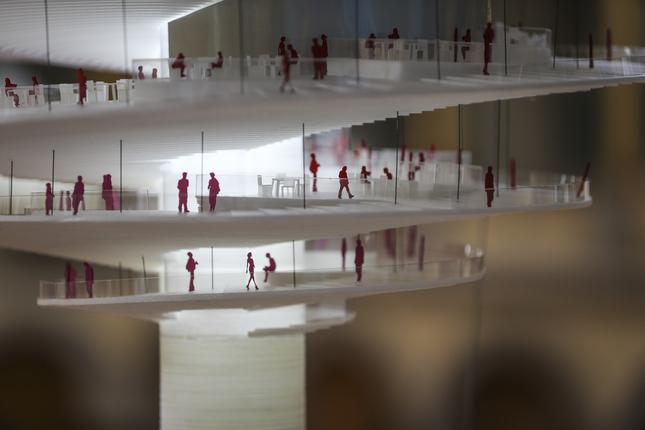Being Green: Building Museum Leeds The Way
By • April 23, 2015 0 1587

Susan C. Piedmont-Palladino is an architect, a professor of architecture and a curator at the National Building Museum. Here she answers some of our questions on sustainability in D.C.:
The Georgetowner: At the National Building Museum, you tell stories of architecture, design and engineering. Is sustainable architecture historic or is this a new phenomenon?
Piedmont-Palladino: In many ways, sustainability is a rebranding of what we used to call common sense. For most of human history, we designed and built as if our survival was at stake, because it was. Had our ancestors not been so successful at sustainable architecture, we wouldn’t be here.
The coal-fired industrial revolutions, and then the age of oil, made it possible to do things we couldn’t do before: extract, transport and construct with materials from far away, heat and cool homes, chill food and water. Those are all wonderful achievements, but over the past few generations we forgot how to build sustainably.
One of my favorite examples of this forgetting – I call it “technology-induced amnesia” – is right on the outside walls of so many Washington houses: wooden shutters. Everyone loves how they look, but no one uses them anymore to do what they do best, which is keep the hot sun out, but let the breezes in.
The Georgetowner: What do you think the future of sustainable architecture entails, especially in D.C.?
Piedmont-Palladino: Washington is well positioned for a greener future for many reasons. First, the city has made green building a priority in new construction through a series of laws beginning with the Green Building Act in 2006, and more recently the 2014 Green Building Code. The city is home to the headquarters of the U.S. Green Building Council (USGBC), the organization that developed the LEED system. It’s not just single buildings, though, that make a difference in the environment. We have to address energy, water and air quality at the scale of the city. Public transportation, sidewalks with trees and rain gardens, bicycle lanes – all these are crucial.
The Georgetowner: What does LEED mean?
Piedmont-Palladino: LEED stands for “Leadership in Energy and Environmental Design.” Designing a building involves a mind-boggling number of decisions, so when you see that plaque on the wall, it means the team that designed and constructed the building made those decisions with energy and environmental stewardship as their top priority.
Designing to LEED standards prompts architects and their clients to think not only about energy efficiency but also indoor air quality, where all the rainwater goes, how the building’s inhabitants get to work, where all the materials come from. There are different levels of LEED certification, with LEED Platinum being the highest.
The Georgetowner: How do you think D.C. is doing as far as getting on board with the green movement?
Piedmont-Palladino: One of the important reasons that our city is increasingly seen as a leader in sustainability is that we’re experiencing a big change in attitude. That has to happen in order for sustainability to stick. Think of historic preservation: we now think twice before we demolish an old building. We have standards and institutions to help us assess the value of a building, to decide whether it deserves protection. That was a huge shift in attitude from the midcentury attitude of “tear it all down and make it new.” Not only is historic preservation a model for how we can recalibrate our opinions of what’s beautiful and valuable, it’s also an indispensable partner in sustainability.
The Georgetowner: If we took a green building tour in D.C., where should we stop?
Piedmont-Palladino: The USGBC’s website is a great place to start. You can search by location and see all the LEED buildings in that area. Many on the list are office buildings, where you might be able to peek into a great lobby, like the one that Gensler designed at 800 17th St., but there are also LEED charter schools, grocery stores and hotels.
My list of must-sees would include the embassies of Finland and Canada, the National Portrait Gallery and each of the District’s renovated branch libraries. What’s great about that beginning list is that these aren’t just environmentally responsible buildings, they’re wonderful places to be, and they contribute to the life of the city. That’s real sustainability.
For more information, visit nbm.org.

